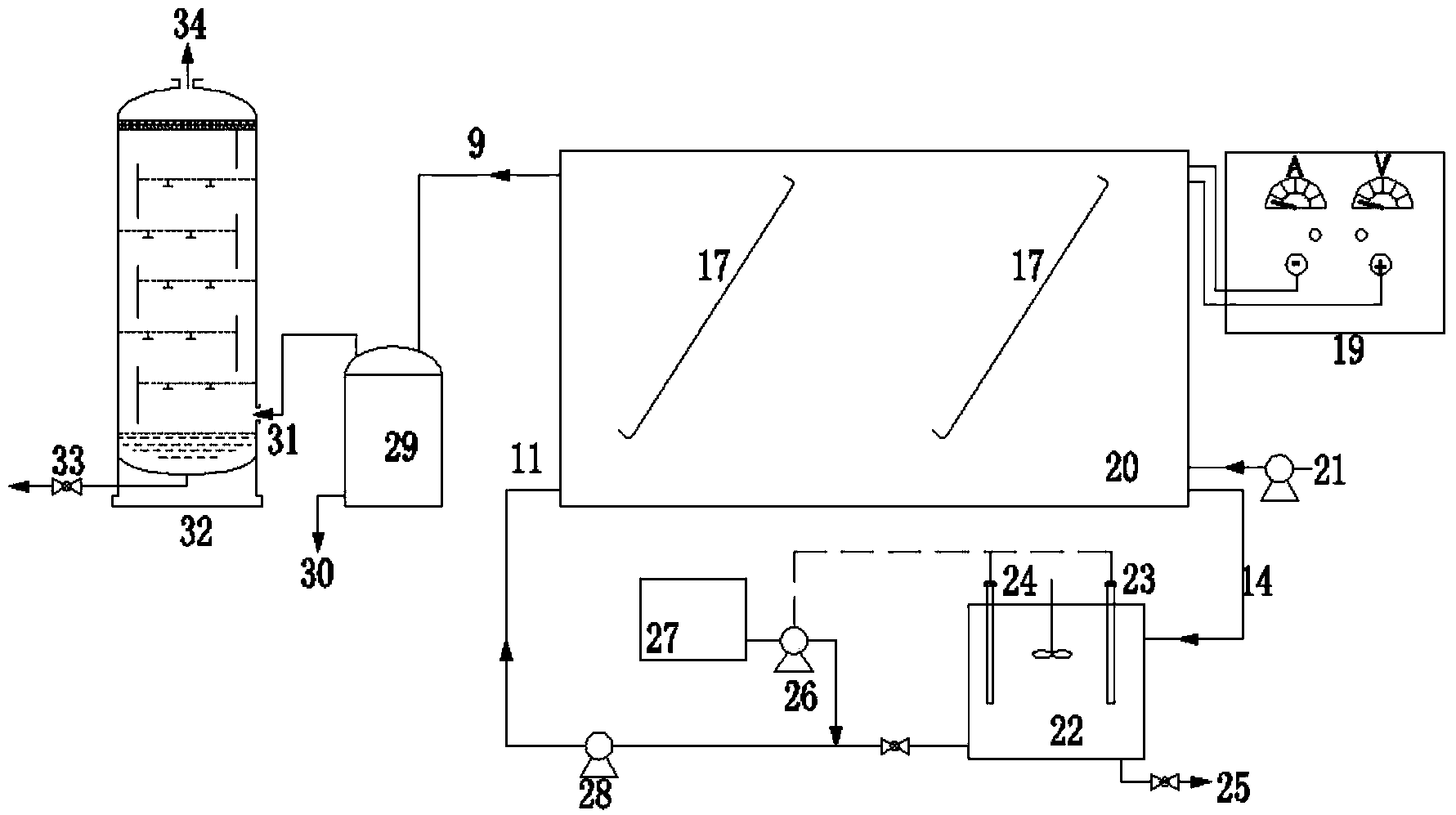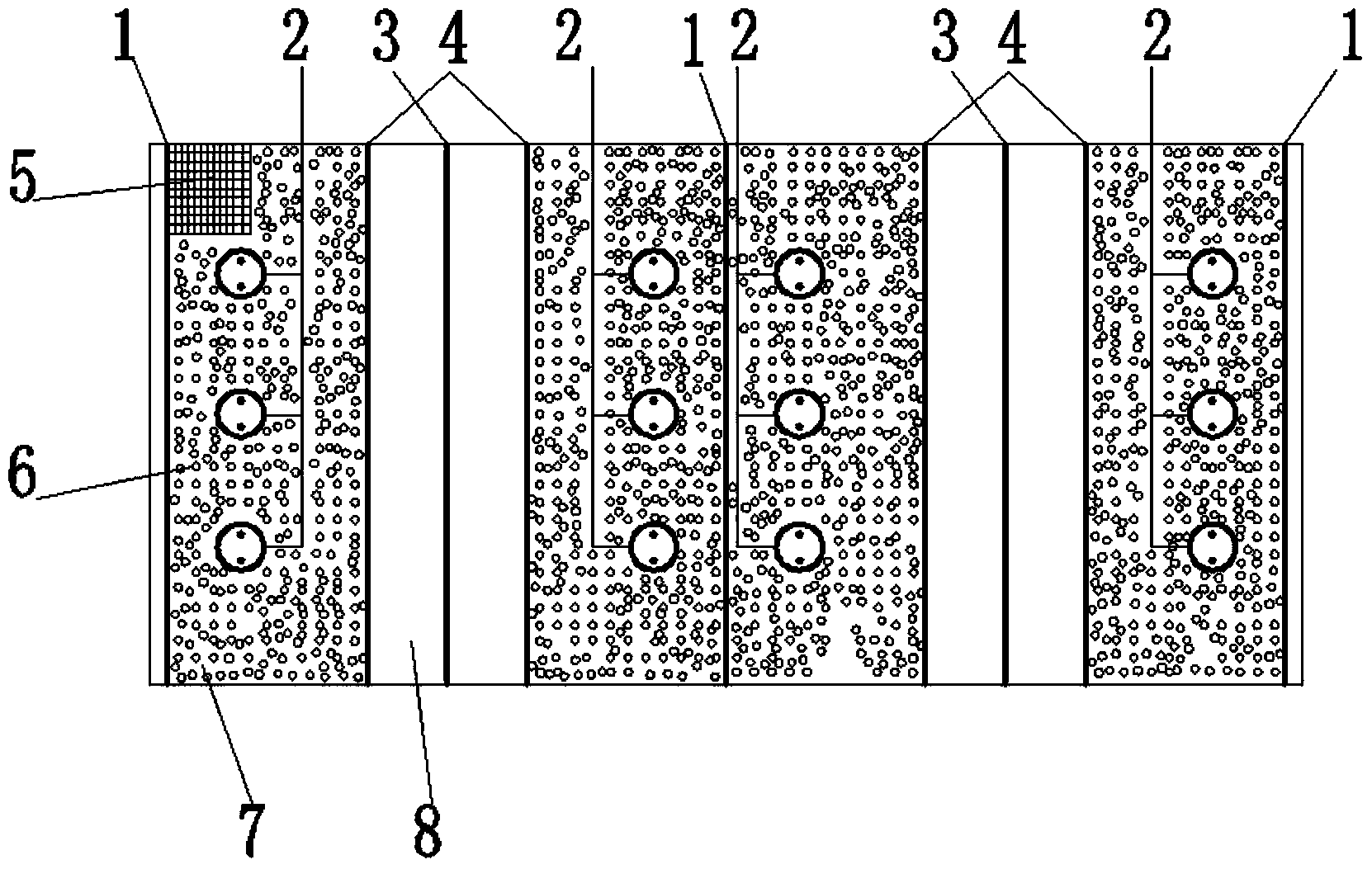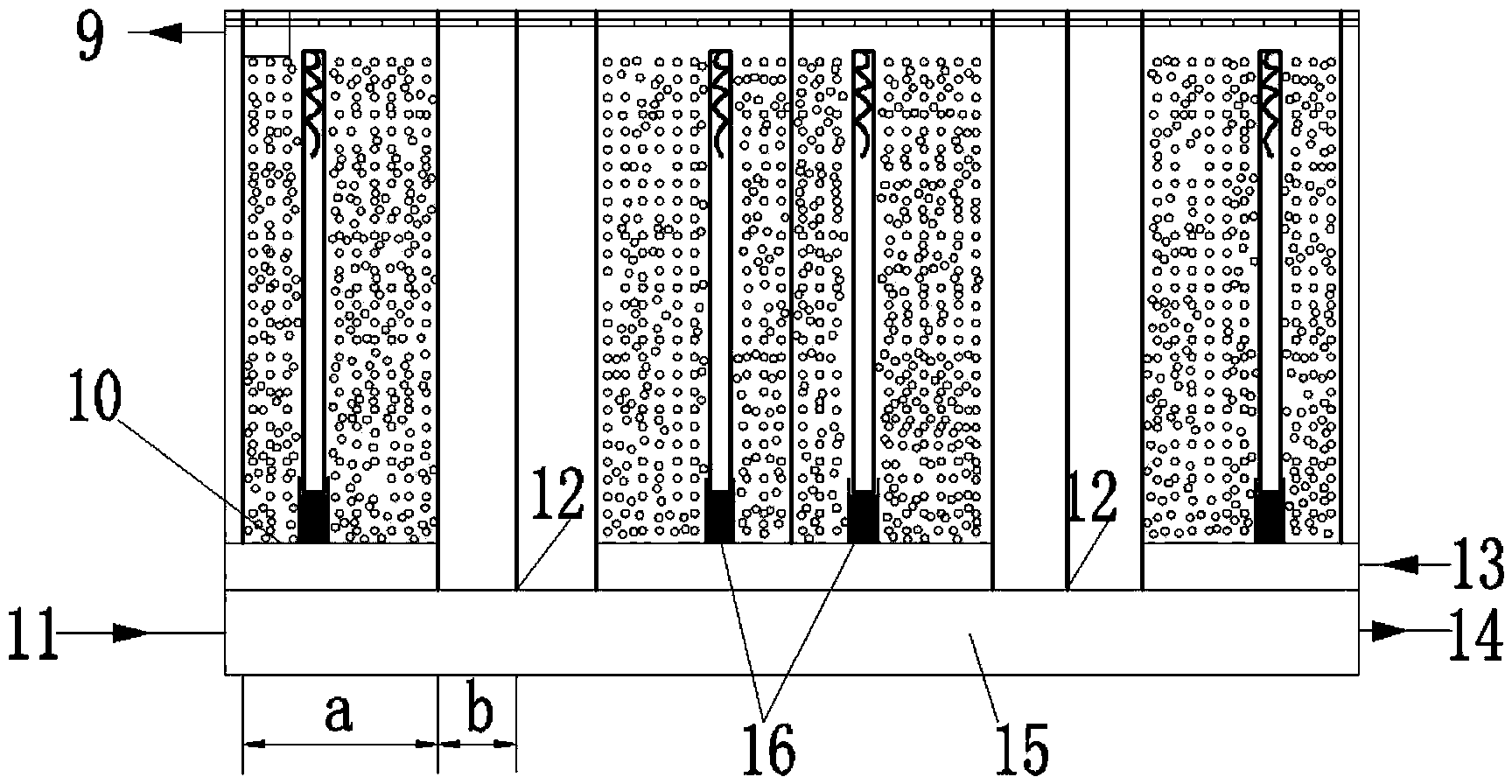Micro-series-wound-internal circulating photoelectric catalysis oxidation wastewater treatment method
A technology for photoelectric catalysis and oxidation of wastewater, which is applied in chemical instruments and methods, multi-stage water/sewage treatment, water/sludge/sewage treatment, etc. life reduction and other problems, to achieve the effect of reducing energy consumption, reducing energy consumption and prolonging service life
- Summary
- Abstract
- Description
- Claims
- Application Information
AI Technical Summary
Problems solved by technology
Method used
Image
Examples
Embodiment 1
[0050] This embodiment is an embodiment of the wastewater treatment system structure and equipment composition of a micro-series-internal circulation photocatalytic oxidation wastewater treatment method of the present invention. like Figure 1-4 As shown, except that the main body structure and equipment technical features of the present invention are consistent with the previous description, its reference signs and equipment components have been further described in detail.
[0051] 1) The main system structure includes:
[0052] A, micro-series photocatalytic oxidation wastewater treatment unit; composed of micro-series photocatalytic oxidation wastewater treatment device 20;
[0053] The micro-series photoelectric catalytic oxidation reaction device of the present invention is formed by seamless welding of acid and alkali-resistant hard PVC plastic, and the exterior is supplemented by a closed stainless steel plate to make it have a certain pressure resistance. Internally...
Embodiment 2
[0066] This example is an application example of the method of the present invention for actually treating wastewater. The concentration of calcium ions in the refining wastewater produced by a petrochemical company in Tianjin is about 1000mg / L, the concentration of chloride ions is 1800mg / L, the conductivity is 8000μs / cm, and the COD after biochemical treatment is 100-200mg / L, which cannot reach the relevant effluent discharge standard. The refinery sewage enters the first anode chamber 7 in the head end of the device through the waste water inlet of the micro-series photocatalytic wastewater treatment device, and reacts under the action of the photocatalyst in the anode chamber 7, and the effluent flows from the top of the anode chamber 7 The outflow passes through the anode connecting pipe 17 and enters from the bottom of the next adjacent anode chamber 7 to continue photoelectrocatalytic treatment until it enters the last anode chamber 7 at the tail of the device and obtai...
Embodiment 3
[0068] This embodiment is another application embodiment of the method of the present invention for actually treating wastewater. Refining sewage produced by a petrochemical company in Zhejiang will produce a certain amount of concentrated liquid after being treated by an ultrafiltration-reverse osmosis double-membrane system. The reverse osmosis concentrated water has the characteristics of high salt content, complex organic components, and poor biochemical properties. The total hardness is 2300mg / L, the COD is 150-200mg / L, and the conductivity is 19000μs / cm. When using the micro-series-internal circulation photocatalytic oxidation wastewater treatment method to treat the company's reverse osmosis concentrated water, the specific steps are basically the same as in Example 2. Similarly, only by adjusting the hydraulic retention time in the reaction device to 2 hours, the CODcr of the final effluent is reduced to 30-40mg / L, which meets the discharge water quality requirements.
PUM
| Property | Measurement | Unit |
|---|---|---|
| wavelength | aaaaa | aaaaa |
| concentration | aaaaa | aaaaa |
| hardness | aaaaa | aaaaa |
Abstract
Description
Claims
Application Information
 Login to View More
Login to View More - R&D
- Intellectual Property
- Life Sciences
- Materials
- Tech Scout
- Unparalleled Data Quality
- Higher Quality Content
- 60% Fewer Hallucinations
Browse by: Latest US Patents, China's latest patents, Technical Efficacy Thesaurus, Application Domain, Technology Topic, Popular Technical Reports.
© 2025 PatSnap. All rights reserved.Legal|Privacy policy|Modern Slavery Act Transparency Statement|Sitemap|About US| Contact US: help@patsnap.com



